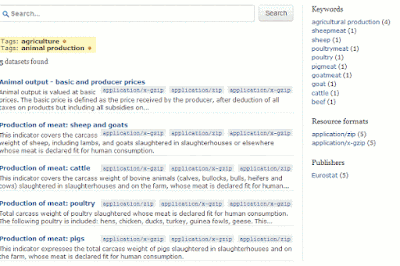Zanran is not a Google alternative. Rather than search the text of web pages it extracts and indexes numerical data presented as tables, charts and images in PDF reports, spreadsheets and ordinary web pages. You can simply type in your search terms but there are additional options for narrowing down the search by location of the web server, specifying an individual site, selecting a time period and limiting by file type.
The results page lists the files it has found with an extract highlighting the content containing your terms. In this example I am looking for data on agricultural methane emissions in the UK.
To the left of each entry is a thumbnail. Moving the cursor over the thumbnail brings up a preview of the page containing the relevant chart, table or image. This enables you to immediately assess the relevance of the data without having to download and go through a lengthy document.
If you click on the thumbnail or the title to view the whole document you have to register (free of charge) as copies of the indexed documents are stored by Zanran. If you prefer to go to the original document click on the URL button attached to the summary of the page and click on the link that is then revealed. Unfortunately, you may see “page not found” especially if it is on a UK government department web site. Many of these have now been closed and their content archived making it difficult to track them down. Registering with Zanran is by far the easier option. Also, rather than deluge you with documents from a single site, as Google all too often does, Zanran gives you a link telling you if and how many other results are available on a site.
How does it compare with Google? Well, Google did come up with relevant results for my search but I had to spend a lot of time ploughing through them to identify the best documents. And Google did not pull up in the first 100 results the very useful archived UK government documents that Zanran gave me.
If you are looking for data or statistics Google still does a very good job but I recommend you also run a search in Zanran. It may well come up with a real gem, as it often has for me.





